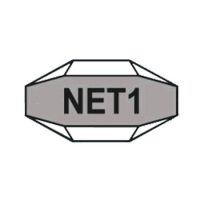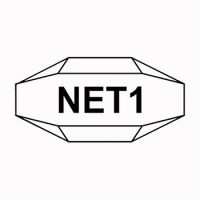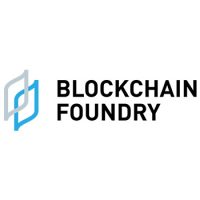Latest News
Population Size and Immigration Policy Could Define the Outcome of US-China Tech Race, Says Ctrip Executive Chairman James Liang

 Reading Time: 3 minutes
Reading Time: 3 minutes
James Liang, Co-founder and Executive Chairman of Ctrip, recently attended the 2019 Yabuli China Entrepreneurs Forum Summer Summit, where he discussed how population and demographic management could be the determining factors in the US-China tech race.
During the forum, Liang spoke about how each nation’s approach to demographics and immigration will play a pivotal role in determining their future innovation and development potential. According to Liang, although China is well-placed to outpace the US in the short term, it will need to tackle the core challenges of population size and demographic make-up to ensure sustainable growth in the long run.
“In simple terms, the more people you have, the more research scientists and engineers will be available to develop world-leading artificial intelligence technologies to overtake your competitors,” said Liang.
Liang observes that China’s current momentum in the tech race stems from both its mammoth population size and the size of its market. With a population of 1.4 billion, China has more human resources to invest in research and development. Coupled with the fact that China is home to the world’s largest e-commerce market, this means domestic technology giants have access to more user application scenarios and innovation opportunities.
In addition, the number of undergraduates produced by China is more than triple that of the US, placing China at a definite competitive advantage for R&D over the next two decades.
Despite this, Liang warned that diminishing fertility rates, an aging population and a ‘brain drain’ of talent would put China’s advantage at risk in the future. The average Chinese family has 1.2 children, effectively halving the population every generation. Lingering effects from China’s one-child policy mean that the population above age 65 will continue to grow exponentially, reaching 330 million by 2050, further impeding the pace of innovation. Chinese students are also lured by the prospect of studying overseas, forming almost a third of American international students.
When asked about China’s radical solutions to address population and demographic issues, Liang responded that proactive policies would play the most prominent role in maintaining its competitive edge.
“In the long run, the outcome will come down to foresighted management of population policy,” said Liang. “It’s not wise to wait for the latest technologies to solve severe demographic problems. For China, this would require significant reform by putting in place policies to encourage childbearing, relaxing immigration and visa laws, and reforming the education system.”
Contrary to China’s potential innovation deficit in the future, Liang views the US’ attitude to immigration as the nation’s most significant hurdle in the future. Liang noted that at present, the US population more than doubles when taking migration into account and, at its current pace, is set to surpass China’s by 2100.
In addition, more than half of all US tech companies are built by immigrants, and non-US citizens make up 45% of all Ph.D. candidates in key innovation fields like engineering, and computer sciences are non-US citizens, as well as 35% in mathematics. Ultimately, Liang says, this demonstrates a strong correlation between a diverse population and innovation.
“An open door to the brightest minds of the world means that US technology companies can be assured of their ability to remain at the forefront of innovation,” said Liang. “The restrictive immigration policies pursued by the incumbent US president run the genuine risk of throwing away the strongest advantage the US holds – an openness to overseas talent. If this protectionism persists, it could have devastating effects on America’s ability to innovate technologically.”
In the end, Liang says the future will be decided by the nation that can best tackle their challenges and adopt new policies to maintain their edge in terms of population and demographics.
“This is where I believe the battle for the top will be won or lost – a young, dynamic population with an openness to seeking the best talent from overseas,” says Liang.
Blockchain
Linklogis Starts First Quarter with Strong Performance, with the Transaction Volume Reaching RMB96.2 Billion
Blockchain
Cross Border Payments Market to Reach $345.42 Billion by 2033; Rising Volume of International Trade & Services to Propel Growth
Blockchain
PairedWorld Earns Nomination for Best Blockchain Project for Social Impact, Secures $1.5 Million in Private Token Sales, and Welcomes Paul Taylor Who Is a Venture Partner at BlackRock to its Advisory Board
-

 Blockchain7 days ago
Blockchain7 days agoBlockchain Transforming Travel: Quantum Temple’s Innovative Venture
-

 Blockchain4 days ago
Blockchain4 days agoPhoenix Group Engages BHM Capital as Liquidity Provider to Boost ADX Liquidity and Enhance Market Dynamics
-

 Blockchain5 days ago
Blockchain5 days agoQuantum eMotion Files a Patent for Quantum-based Blockchain Wallet Under the Patent Cooperation Treaty (PCT)
-

 Blockchain Press Releases5 days ago
Blockchain Press Releases5 days agoCanaan Shines at Blockchain Life 2024 in Dubai
-

 Blockchain Press Releases5 days ago
Blockchain Press Releases5 days agoBybit Institutional Report 2024: Institutions Become Bullish and Eye Challenger Chains, while VC Funding Resurges for Infrastructure, Gaming, and AI
-

 Blockchain5 days ago
Blockchain5 days agoElizabeth Warren Urges Treasury Secretary Yellen to Implement Strong AML/CFT Measures for Stablecoins
-

 Blockchain Press Releases6 days ago
Blockchain Press Releases6 days agoBybit and Franck Muller Partner with Sidus Heroes to Launch Cosmic Gears: A Pioneering Web3 Game with a $250,000 Prize Pool and Exclusive Watch Collection
-

 Blockchain7 days ago
Blockchain7 days agoEvolution of the Blockchain World: Doric Blockchain Drives Education and Adoption of Blockchain Technology and Tokenization in Latin America












































